Killdeer Nest in Middle of a Busy Backyard
Updated: Apr. 24, 2020

Last week, my sister was in the backyard of her small farm when a killdeer started squawking at her. This
Last week, my sister was in the backyard of her small farm when a killdeer started squawking at her. This kept occurring every time she venture out into the back lawn.
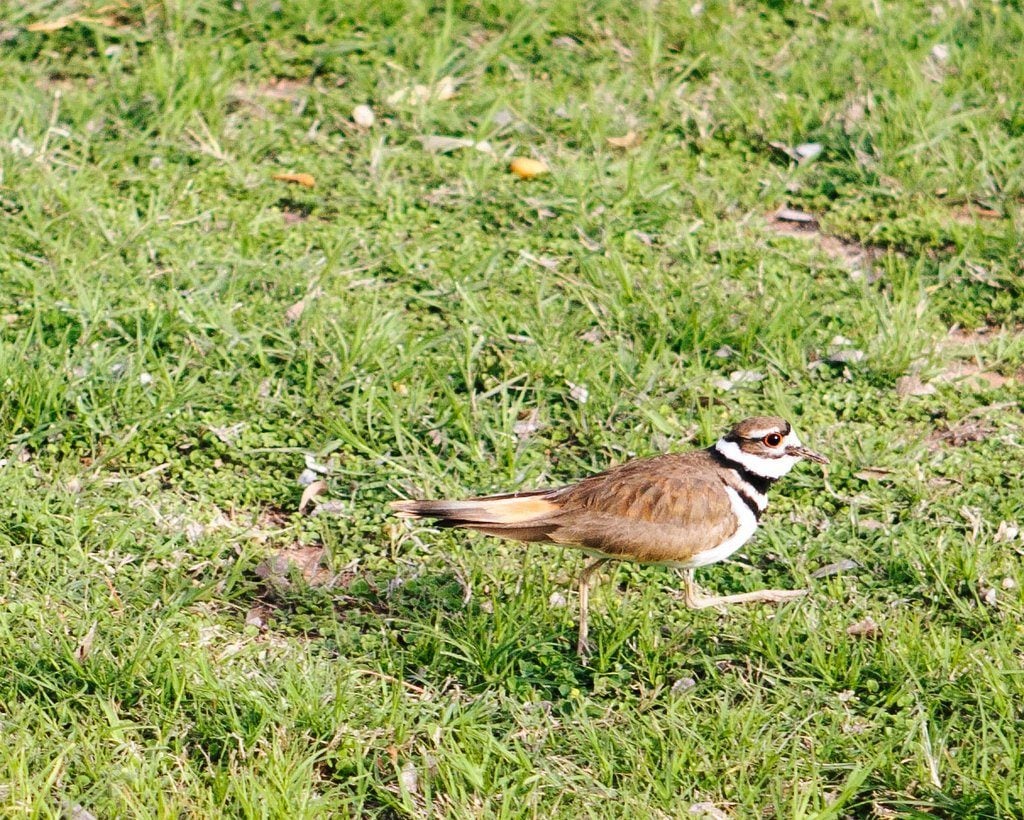
It wasn’t until the killdeer pretended to have a broken wing that my sister realized that there must be a nest nearby. Killdeer often pretend to be injured to lure intruders away from their nests.
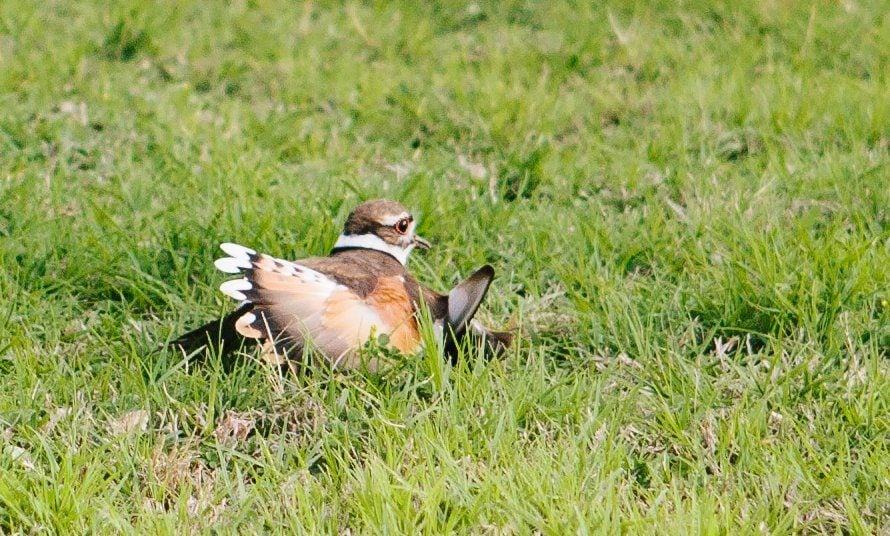
So, the hunt for the nest was on. It was quite hard to find because killdeer don’t really build nests. They often just lay their eggs in the middle of a field of grass.
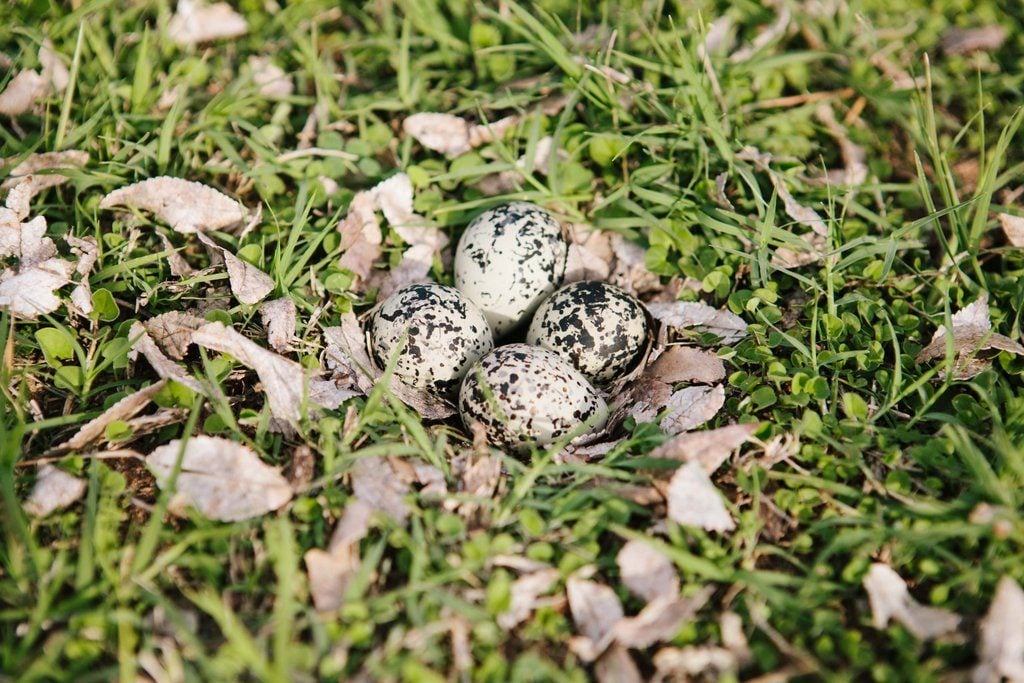
The nest was discovered in the middle of the back lawn. The mother seemed quite content with her choice of nesting spot. However, she could hardly have picked a more chaotic spot to lay eggs. The spot she chose is often populated by two rambunctious dogs, a flock of chickens and two energetic boys.
My brother-in-law built a fence to keep the dogs, chickens and kids away from the nest. You can barely see her sitting on her nest in the distance…
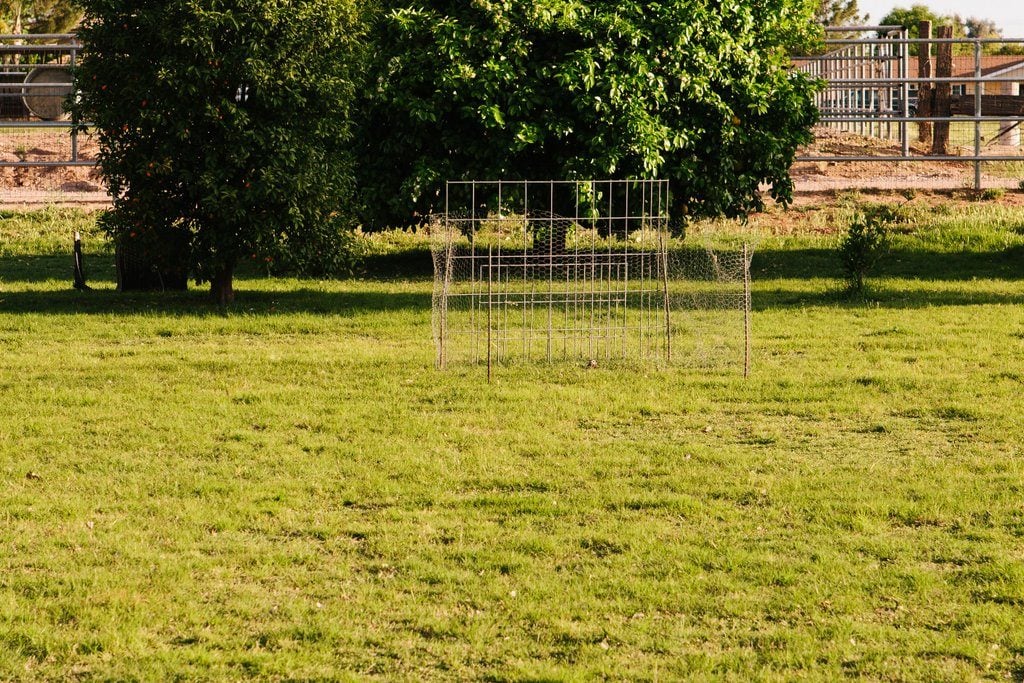
Here is a closer shot….
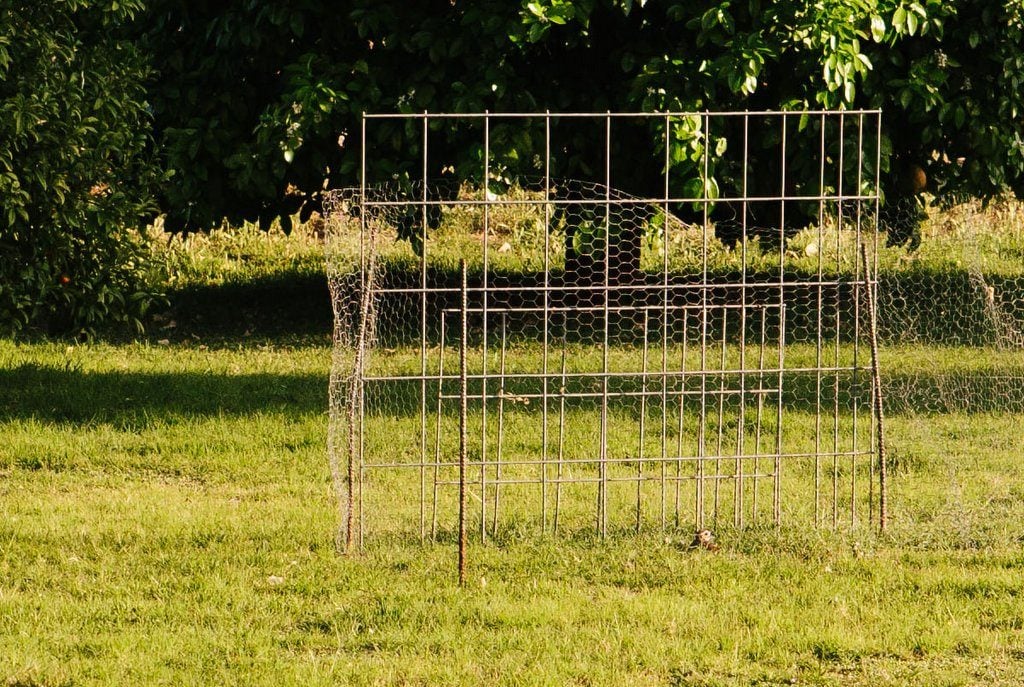
Occasionally, if a chicken or dog gets too close, she will call out and her mate will fly to her. One of the sounds that they make sounds like “killdee”.
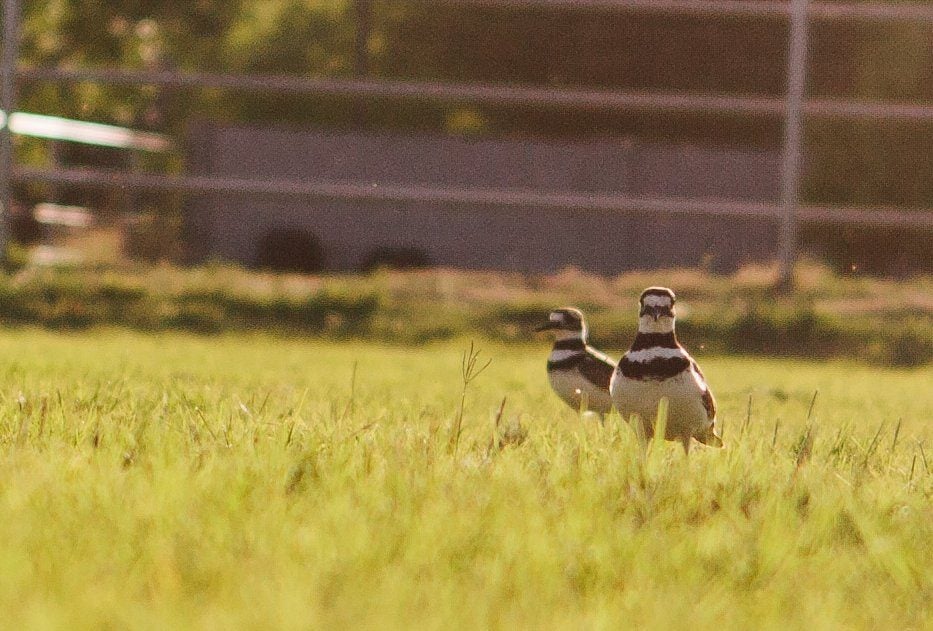
Killdeer raise 2 – 3 broods in the south beginning in March. So, this is probably their first brood this year.
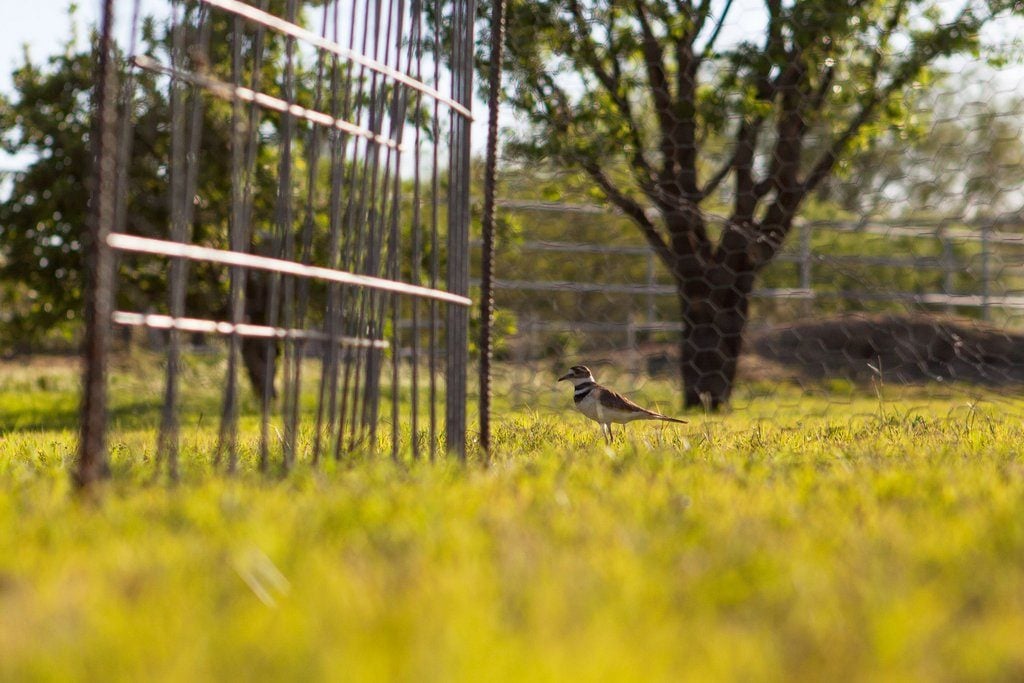
Killdeer are known to lay eggs in the middle of gravel, so I guess a nest in the middle of a busy backyard, isn’t all that out of the ordinary.
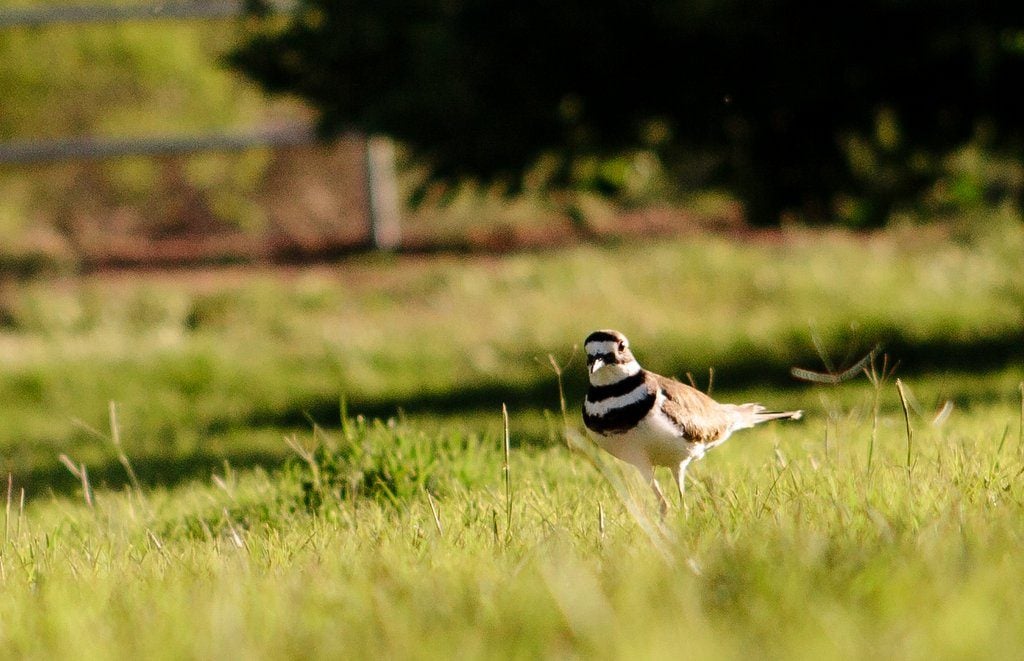
Killdeer are found throughout the entire United States. They are very vocal and found near human habitation. While they are technically shore birds, they are often found far away from bodies of water – these two have laid their eggs in the middle of the desert where there aren’t too many large bodies of water.
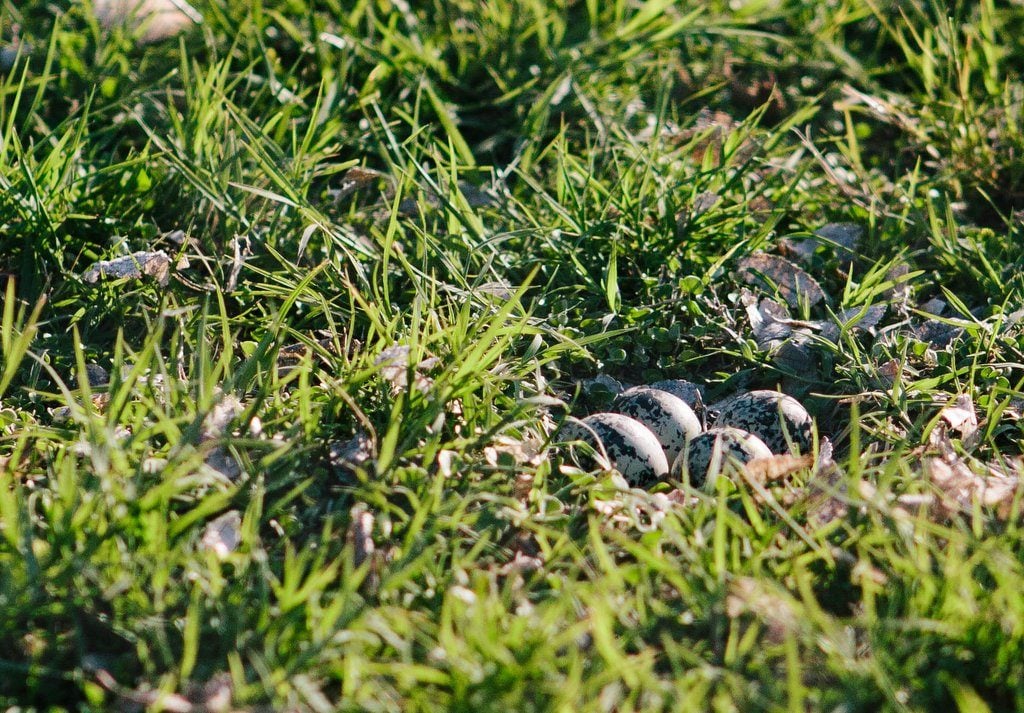
Killdeer eggs take 24 – 28 days to incubate. This may seem like a long time, but when young killdeer hatch, they are able to scurry about right away and forage for food with their parents. As a result, they spend twice as long inside the egg maturing as opposed to other birds such as robins and sparrows, which are born helpless and naked and have to rely on their parents to feed them.
I promise we will keep a close eye on this killdeer pair and their nest (from a distance, of course, so we don’t bother her). As soon as the chicks hatch – I’ll be sure to let you know and post pictures!
How about you? Have you ever seen a killdeer nest? Tell us where it was.
For more information on this interesting bird, check out this article by Birds & Blooms.



















